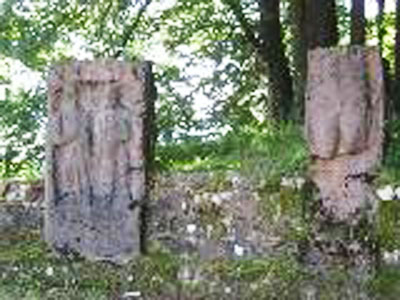 Tell Ramad is a prehistoric, Neolithic tell at the foot of Mount Hermon, about 20 kilometres (12 mi) southwest of Damascus. The tell was the site of a small village of 2 hectares (220,000 sq ft), which was first settled in the late eighth millennium.
Tell Ramad is a prehistoric, Neolithic tell at the foot of Mount Hermon, about 20 kilometres (12 mi) southwest of Damascus. The tell was the site of a small village of 2 hectares (220,000 sq ft), which was first settled in the late eighth millennium.
The tell was discovered by French customs officers, M. Compant and Lieutenant Potut. Laurisson Ward visited Tell Ramad again in 1939 and collected material from the surface, now in the Peabody Museum. Tell Ramad lay somewhat forgotten until it was rediscovered by W.J. van Liere and Henri de Contenson, the latter leading excavations in 8 seasons between 1963 and 1973.
Notable features from the earliest stage include a number of 3–4 metre diameter, lime-plaster floored, clay lined oval pits with ovens & clay bins that were suggested to have been used as houses. There was nothing to suggest a break in occupation between level I and II of the site. Burial customs appear to have been unchanged between the two periods. Burials were mostly done in communal graves, with little deposits of grave goods. Different flint tools were found at the site in both periods, including sickles and arrowheads.
Tell Ramad is notable as one of the few sites fundamental to our understanding of the origin of agriculture with finds including various types of domesticated wheat and barley. Emmer wheat is an important characteristic of Basin sites in this area, where it is thought to have been introduced. Wild plant foods include pistachios, almonds, figs and wild pears. The mammal fauna from level I at Tell Ramad shows that both sheep and goats were fully and simultaneously domesticated at the site, although the sheep-to-goat ratio is more than 3 to 1.
Maysa Wassouf

